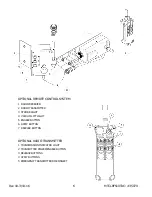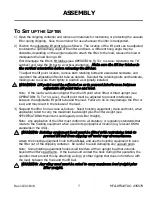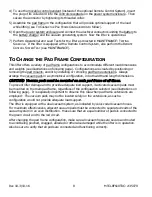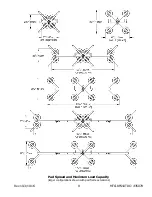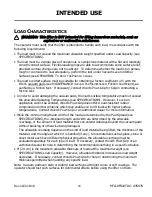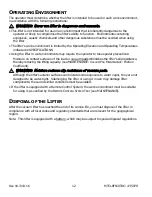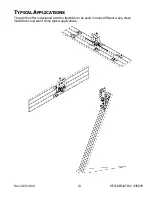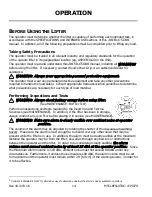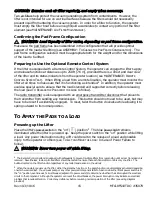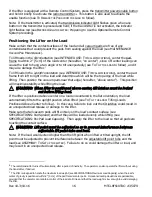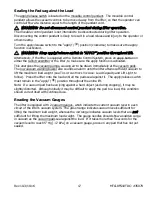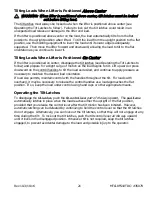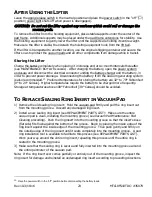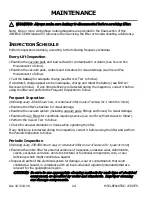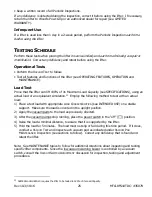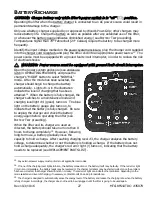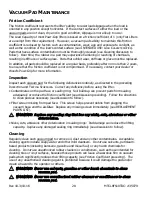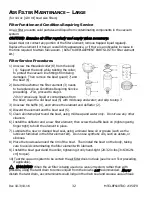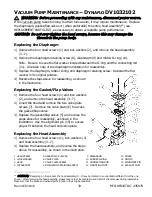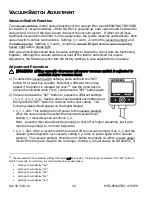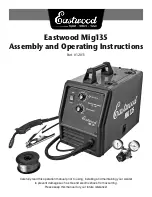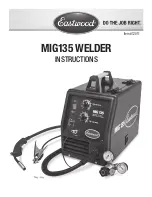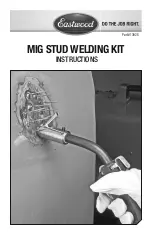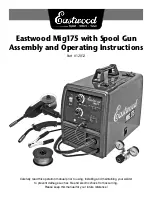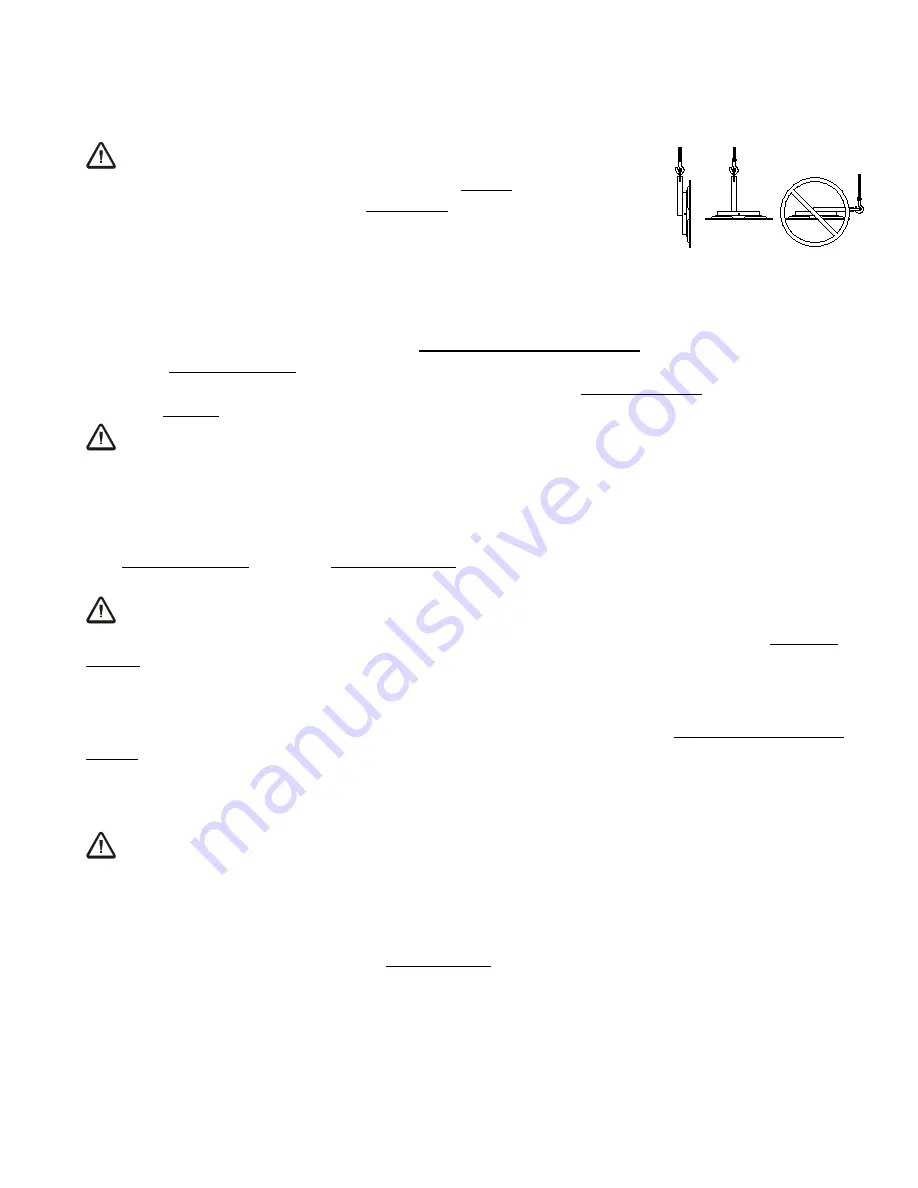
Rev 10.3/10-16
19
MTCL8FS10TDC: #35079
T
O
L
IFT AND
M
OVE THE
L
OAD
Positioning the Lift Bar
WARNING: Lift bar must be oriented vertically to lift load.
Never lift the load from a flat position with the lift bar latched parallel
to the load. Always disengage the tilt latches (see T
O
T
ILT THE
L
OAD
to
follow) and raise the lift bar to a vertical orientation before attempting
to lift.
Interpreting the Warning Buzzer and Lift Light
A lifter’s Load Capacity is rated at a vacuum level of 16" Hg [-54 kPa] (see SPECIFICATIONS).
After the lifter has attained this level, the low vacuum warning buzzer turns
off automatically and
the green vacuum lift light turns
on automatically, to signal that the lifter is ready to lift the
maximum load weight. As vacuum continues to increase, the vacuum pumps turn off to
conserve battery energy.
WARNING: Never attempt to lift load unless green lift light is illuminated.
Do not attempt to lift the load unless the lift light is illuminated; such an attempt could result in a
load release and possible injury to the operator.
Monitoring Vacuum Indicators
The vacuum lift light and both vacuum gauges must remain completely visible to the operator, so
that they can be monitored throughout the entire lift.
WARNING: Vacuum indicators must be visible to operator throughout entire lift.
If the vacuum system experiences leakage while the lifter is attached to the load, the vacuum
pumps turn on and off automatically, as required to maintain sufficient vacuum for lifting the
maximum load weight. Under normal conditions, such intermittent cycling of the pump is no
cause for alarm.
However, if vacuum decreases significantly, the lift light turns
off and the low vacuum warning
buzzer turns
on, to signal the reduction in vacuum to the operator. If this occurs while you are
lifting a load, make sure both vacuum gauges show a vacuum level of 16" Hg [-54 kPa] or
higher. If not, move away and stay clear of the load until it can be lowered to the ground or a
stable support.
WARNING: Stay clear of any suspended load while vacuum level is lower than
16" Hg [-54 kPa].
Discontinue lifter use until the cause of the vacuum loss can be determined. If the pumps run at
intervals of five minutes or less while the lifter is attached to clean, smooth, nonporous materials,
a leak in the vacuum system is likely to be the cause. In this event, perform the V
ACUUM
T
EST
(see MAINTENANCE) and inspect the vacuum pads for damage (see MAINTENANCE: V
ACUUM
P
AD
M
AINTENANCE
: Inspection). If the vacuum loss cannot be remedied immediately, perform
inspection and maintenance as needed to identify and correct any deficiency before resuming
normal operation of the lifter.
Summary of Contents for MTCL8FS10TDC
Page 2: ...View Quick Start Guide...
Page 40: ...Rev 10 3 10 16 38 MTCL8FS10TDC 35079...
Page 41: ...Rev 10 3 10 16 39 MTCL8FS10TDC 35079...
Page 42: ...Rev 10 3 10 16 40 MTCL8FS10TDC 35079...
Page 43: ...Rev 10 3 10 16 41 MTCL8FS10TDC 35079...
Page 44: ...Rev 10 3 10 16 42 MTCL8FS10TDC 35079...


